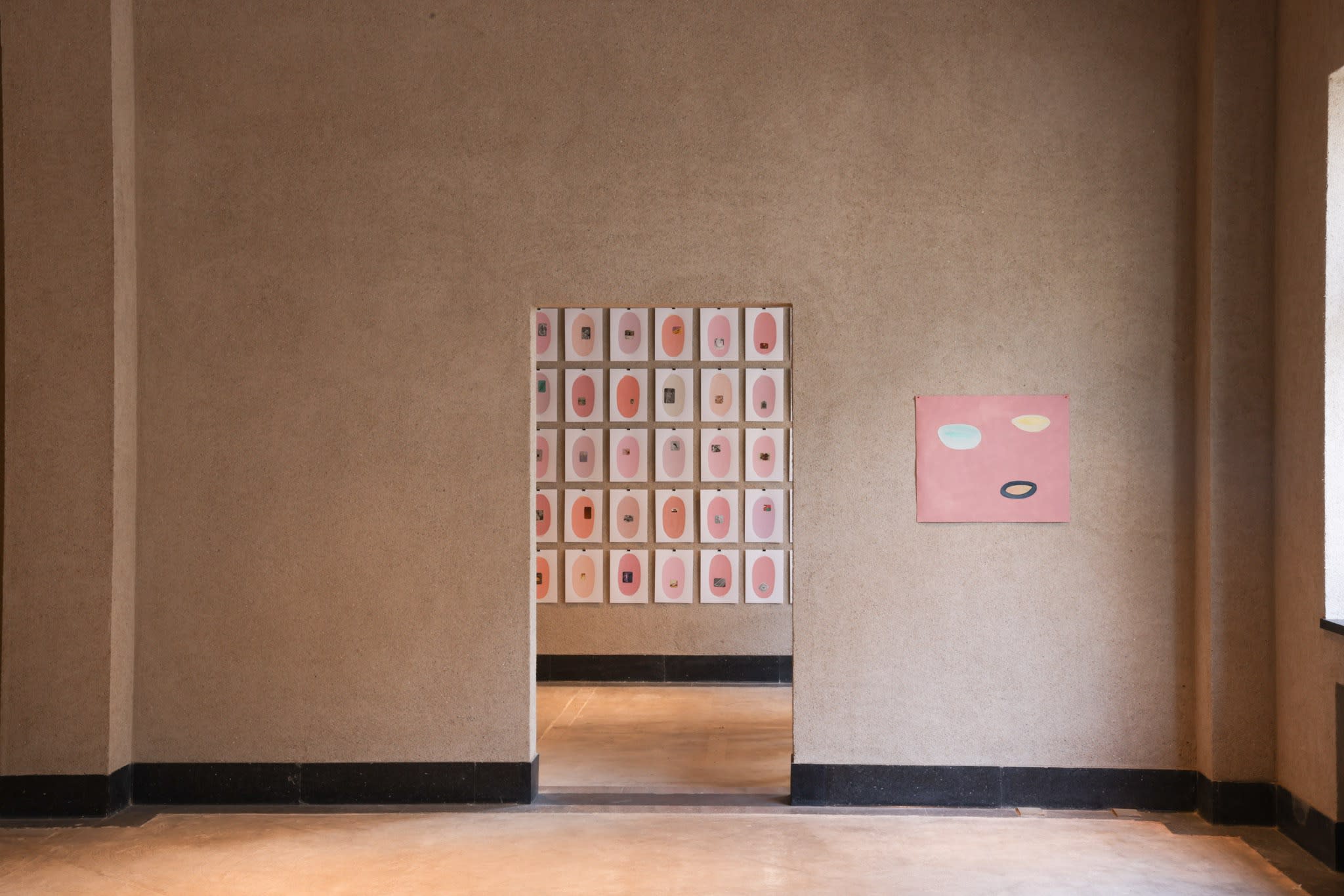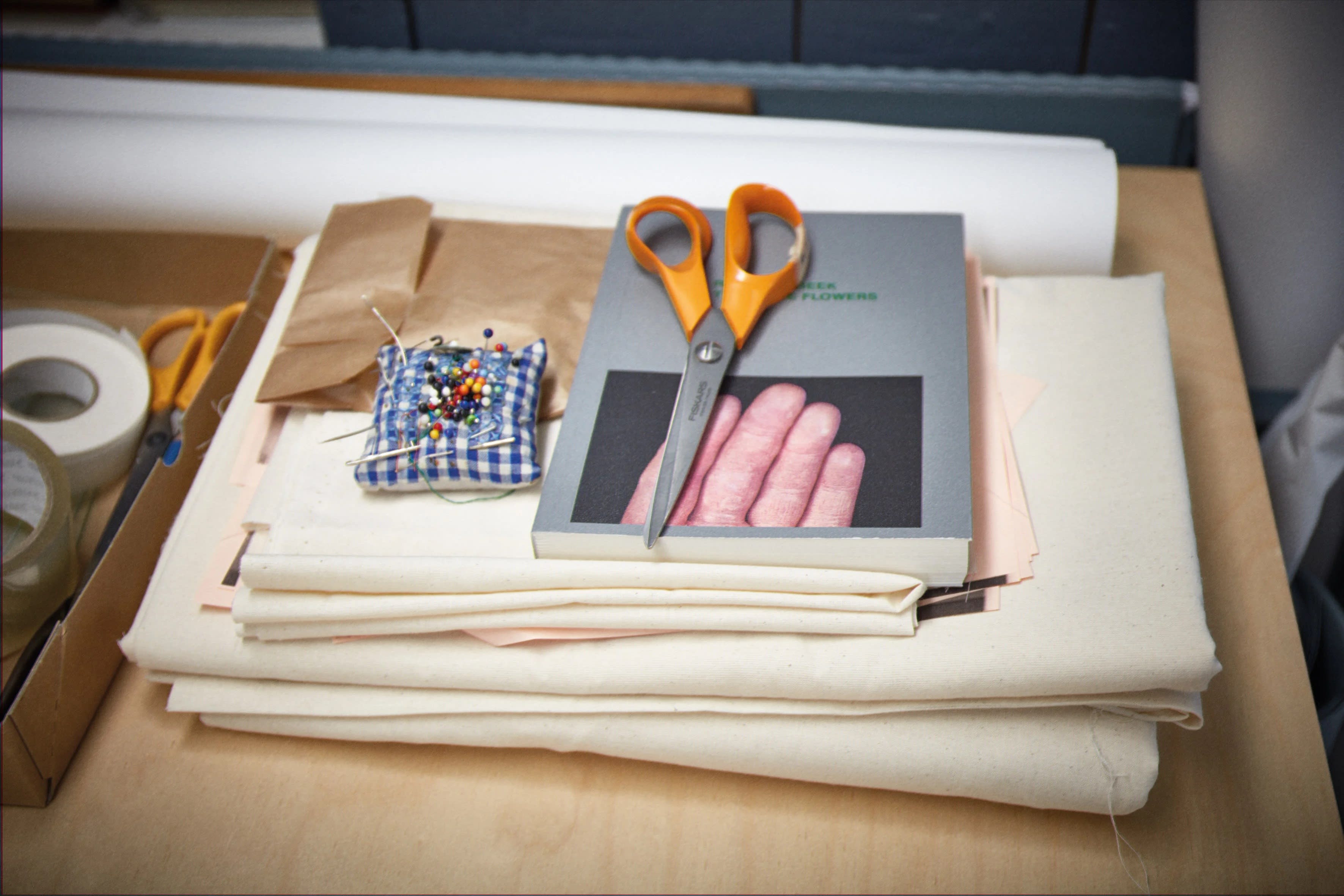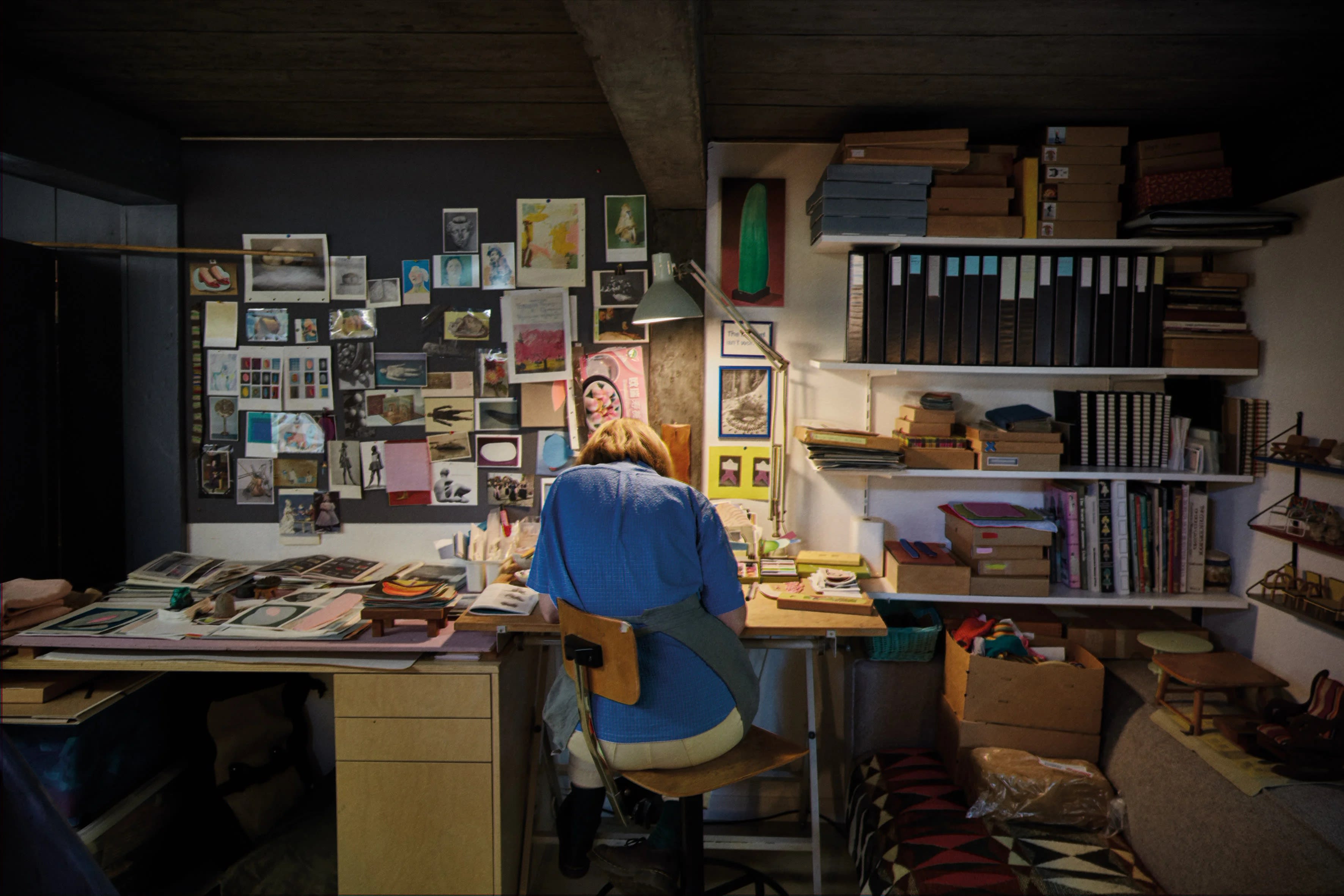Known for her collage artistry, Ruth van Beek creates her work by reconstructing book and magazine clippings that she routinely collects. Her ongoing exhibition at Vague Kobe is centered around her new book, The Oldest Thing (Van Zoetendaal Publishers, 2023), which draws inspiration from three binders containing her mother's meticulously copied recipes and pasted pictures. But instead of cooking up the recipes, Ruth kept the binders for other reasons-we caught up with her to find out why.
'These binders that I inherited are from before I was born. My mother loved to cook and she collected recipes. She died when I was 15, so I don't have a lot of objects from her, but these binders have always been around.' - Ruth van Beek
Exploring the connection between her mother's binders and her archival collection of images focusing on household books and instructional guides, Ruth notes the impact of aging and gaining new perspectives. 'I am now older than my mother when she passed away-there was a new realisation of knowing what it is to be a mother at a certain age. You get a constantly different relationship with a person who is not there anymore. Because I get older but she doesn't.

Installation view at Vague Kobe, Japan
As she delves into creating The Oldest Thing, Ruth also reflects on the archive's significance in her creative process. 'I started with some images from her binders, some cut-outs, and then I just started collecting things from all my books and archives that had to do with the interior and the world of the house. I thought about how photography from these functional books for housewives can have a different sort of life when you take the context away and collect it together in a new grouping. I'm adding weird materials like an anteater, so it also becomes like a dream world or a metaphor for our inside worlds.'Ruth continues to explain her approach to managing an overwhelming image archive, 'It's an intuitive way of working. Over time, a new logic emerges. I have all these thoughts going on and I have all the materials. When my designer, Willem Van Zoetendaal and I discussed the rhythm for this book, Willem suggested a format where the pages would be vertical, and we decided to always tilt the images so that they fit into the page. What happens then is, a plate turns into an oval shape when it is tilted vertically. This is a car; this is a cave. We tilted everything. It is a simple gesture, but then it all merges, triggering a snowball effect. Suddenly I see it everywhere. Once I establish this logic, it becomes a filter for my search-a new way of collecting and exploring.'

Studio shot of Ruth van Beek's atelier by Koen Hauser.
Expanding on her enduring fascination with the oval shape, Ruth adds, 'They could be interpreted as red cheeks or an egg, a feminine figure, or a seed. The silver and shininess of the cover further amplify the idea that it can be a lot-it can be 3-dimensional, or it can be a hole, or it can just be a flat painting-it triggers the imagination.'
Similarly, a large wall of silkscreen prints of repeating oval shapes in various shades of pink is one of the highlights of this exhibition-displayed here are 60 out of 100 prints from the series The Spell. This is a body of work that Ruth created during a residency in the Netherlands in the summer of 2021, where she was invited to use their screen printing facilities.

The Spell, 2018 © Ruth van Beek / courtesy The Ravestijn Gallery
In The Spell, Ruth uncovers a profound connection between the inherent rhythmic repetition in silkscreen printing and the daily routines of domestic life. This revelation unfolds as she carefully crafts her collection of 100 prints, elegantly housed in a striking red box. Ruth tells us, 'What interests me about silkscreen printing is the process of building colour. The repetitive, hands-on nature of the task was intriguing for me, and it was hard work. I would wake up early in the morning and start creating these oval shapes'. Explaining the meticulous process, she continues, 'There are many layers involved, one representing an oval and another giving a hand-painted aesthetic. I made the canvas with something that I painted-so there's the repetition of the printing, but still the suggestion that it's hand-painted all the time. In the end, I made 100 of this.'

Studio shot of Ruth van Beek's atelier by Koen Hauser.
Returning to her studio, Ruth added layers of depth and meaning to each print. 'I carefully selected a slightly different ink for every print so the prints are all different. Then, I integrated small images from my archive that represent household tasks. There is a door in my house that leads into my studio, which means that daily life is always very close to my work. It has been like that for many years, but it became more apparent during covid and the lockdowns because everybody is at home. The threshold between the household and the studio becomes increasingly blurry for me.'
Having previously published numerous artist books, including The Arrangement (RVB Books, 2013), which was nominated for the Aperture Photobook of the Year Award in 2014, and How To Do The Flowers (APE&Dashwood Books, 2018), Ruth van Beek emphasises, 'The book is never a catalogue of the work. The work influences the book and the book influences the work'. A keen observer of Ruth's beautiful publications would also quickly observe that she is a book lover. What is her relationship with books?

The Arrangement (RVB Books, 2013)
'It's because I destroy a lot of books. (laughs) I think my work finds a natural home in books. A book is a space in which I can play with expectations of the images. For instance, scale becomes very interesting because images in a book are always a representation of things. There's an expectation-the real object could be really big or small. I enjoy playing with that dynamic and I also love that books can travel so easily and that they are available for everybody. If I make a collage work, there's only one; it's a unique work. It's very fragile, expensive, and only one person can have it. In contrast, you have a thousand copies of a book, and they can go all over the world. People can easily establish an intimate relationship with the work.
Lastly, on two long wooden tables in the largest gallery space located in the heart of Vague, lay two long accordion books of collected images. One of them is pink, enveloping another collection of oval-shaped images. 'That was my image research before I made The Spell. I was looking for these oval and egg shapes, thinking how photography can represent tension of the skin.'

Installation view at Vague Kobe, Japan
The other accordion book is sky blue, and on it is a compilation of small doll socks and stockings that Ruth had found on eBay. 'I'm very interested in animating the figures; I always try to make the figures in my collage to be in between an object and something alive. Or something that you can imagine is moving or is sort of looking back at you without it having eyes. Of course, you can put a mouth, and some eyes on it to make a face, but I'm not interested. I want to breathe into this flat paper object so the viewer can imagine it moving as a creature. In my other collages, the objects sometimes have something sticking out like little limbs, or a little bit of hair coming out to animate them. That's why I was looking into these doll socks.'

Studio shot of Ruth van Beek's atelier by Koen Hauser.
'This animating and the triggering of the imagination happens in the details. It's a very fine line, and I love to walk that line. If there's a tiny hair coming behind something, you understand it's a body. Or if there's a little shadow, it changes how you see the image. Something happens; it triggers curiosity and longing. My work is all very much about the collecting of images, creating the archive, and bringing them together to give an autonomous status to the work.'

